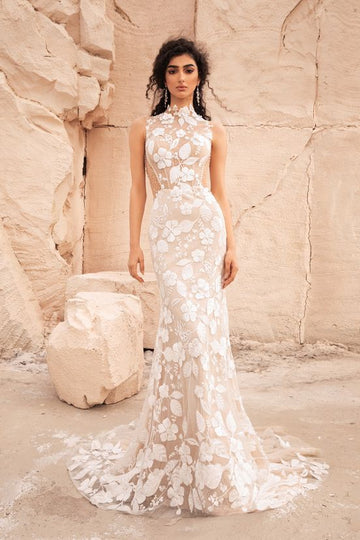Customized Vintage Styles for the Modern Bride: A Timeless Choice
Customized Vintage Styles for the Modern Bride: A Timeless Choice
In a world where bridal fashion often leans towards contemporary trends, there's a growing fascination with the charm and elegance of vintage styles. For the modern bride, customized vintage styles offer a unique blend of nostalgia and personalization, resulting in truly unforgettable wedding attire. In this article, we will explore what makes vintage styles special, how to customize them, and tips for selecting the perfect gown that fits your unique personality and wedding theme.
Understanding Vintage Styles
Vintage bridal wear typically refers to styles from the 1920s to the 1980s, each era showcasing distinct silhouettes, fabrics, and details. The allure of vintage bridal fashion lies not only in its historical significance but also in its artistry. Let's take a closer look at some key vintage eras:
| Era | Key Features | Popular Fabrics |
| 1920s | Flapper dresses, drop waists, and intricate beadwork | Silk, chiffon, and lace |
| 1950s | Full skirts, fitted bodices, and tea-length styles | Organza, taffeta, and satin |
| 1970s | Bohemian styles, flowing fabrics, and lace details | Cotton, lace, and lightweight blends |
By understanding the defining characteristics of these eras, modern brides can better appreciate the vintage choices available to them.
Why Customize Vintage Styles?
Customization can transform a vintage dress from a simple garment into a wedding masterpiece that reflects your personal style. Here are a few reasons to choose customized vintage styles:
- Personal Touch: Customization allows you to incorporate meaningful elements, whether it's a family heirloom lace or a color that represents your heritage.
- Perfect Fit: Vintage sizes may not suit every body type. A customized gown ensures that it fits perfectly, flattering your figure.
- Uniqueness: Customized dresses are one-of-a-kind, allowing you to stand out on your special day.
Steps to Customize Your Vintage Bridal Gown
To create the perfect customized vintage gown, follow these steps:
1. Research and Inspiration
Start by browsing vintage bridal magazines, online forums, and social media platforms like Pinterest and Instagram. Gather images that resonate with your vision for your wedding day. 
2. Choose Your Era
Based on your research, select a particular vintage era that inspires you the most. This will help narrow down your styles and inspirations.
3. Consult with a Designer
Once you have a vision, consult with a designer who specializes in vintage styles. They can help you refine your ideas and suggest fabrics, embellishments, and patterns that align with your vision.
4. Sketch Your Design
Create a rough sketch of your desired gown. Include elements from your inspirations and discuss them with your designer to create a cohesive design.
5. Fabric Selection
Choose fabrics that not only reflect your desired era but also suit your wedding theme and season. Remember, lightweight fabrics are best for summer weddings, while heavier fabrics are ideal for winter.
6. Fittings
Schedule fittings throughout the creation process to ensure the gown is tailored to your individual shape and preferences.
7. Final Touches
Add final details such as veils, accessories, and shoes that match your vintage gown. Don't forget to consider your wedding's overall aesthetics.
Accessories to Complete the Vintage Look
Accessories can enhance a vintage bridal style significantly. Here are some suggestions:
- Jewelry: Opt for vintage-inspired pieces such as pearl earrings or Art Deco bracelets. Avoid overly trendy accessories to maintain the vintage vibe.
- Headpieces: From birdcage veils to floral crowns, the right headpiece can elevate your vintage look. Explore options that align with your wedding theme.
- Footwear: Consider period-appropriate shoes, such as classic pumps or elegant flats with vintage detailing.
- Boleros or Wraps: These can add warmth and elegance, especially for fall or winter weddings. Opt for lace or embroidered styles to match your gown.
Choosing the Right Venue
Your wedding venue can enhance the vintage feel of your special day. Consider locations that embody a sense of history or elegance such as:
- Historic mansions or estates
- Charming barns with rustic decor
- Botanical gardens or vineyards
- Art galleries or museums
Final Thoughts on Customized Vintage Styles
Customized vintage styles offer modern brides the opportunity to embrace the elegance of the past while ensuring a personalized and uniquely crafted gown. The combination of historical beauty with modern customization makes vintage bridal wear a timeless choice. Remember, the most important aspect of your wedding attire is that it reflects who you are. Consider the vintage elements that resonate with you and work closely with your designer to achieve your dream dress.
As you embark on this exciting journey, keep in mind the importance of planning well in advance to allow ample time for fittings and adjustments. Your wedding day is a celebration of love and commitment; your dress should be a true representation of your style and personality. By choosing customized vintage styles, you’re not just wearing a dress—you’re embracing a timeless legacy.
